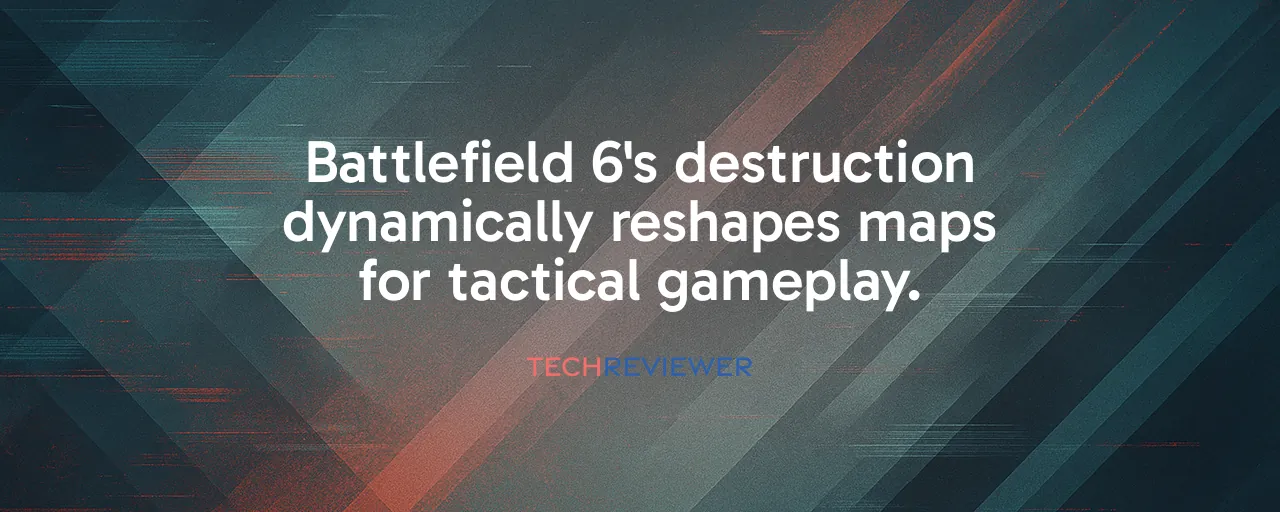Breaking Down Walls, Literally
Battlefield 6 delivers battlefields that feel alive, where buildings collapse and debris scatters with every explosion. The game's destruction system, built on EA's Frostbite engine, lets players reshape environments strategically, creating new paths or wiping out enemy cover. This level of freedom draws directly from the chaotic, satisfying destruction of Battlefield Bad Company 2, but it's amplified by modern hardware.
Unlike earlier titles, where destruction often felt scripted or limited, this system calculates structural integrity in real time. Players can blast through walls to open sightlines or bring down entire structures, making every match unpredictable. It's a technical feat that leans heavily on the power of PlayStation 5, Xbox Series X/S, and high-end PCs.
The Power of Next-Gen Hardware
The secret behind Battlefield 6's jaw-dropping destruction lies in a bold choice: dropping support for PlayStation 4 and Xbox One. Christian Buhl, the game's technical director, explained that older consoles, with their 8GB of GDDR5 RAM and less powerful CPUs, couldn't handle the complex physics calculations needed. In contrast, the PlayStation 5 and Xbox Series X offer significantly greater memory and CPU performance, enabling the advanced destruction system.
This hardware leap allows the Frostbite engine to track thousands of debris objects and maintain persistent destruction states throughout a match. Developers spent countless hours testing and optimizing to ensure these dynamic environments don't tank frame rates, even in chaotic 64-player battles.
Lessons From the Past
Battlefield's history with destruction offers valuable lessons. Back in 2010, Bad Company 2 set a high bar with its intimate, tactile destruction, letting players demolish entire buildings. But later titles like Battlefield 4 and 2042 scaled back, prioritizing larger maps and player counts, which frustrated long-time fans. Battlefield 6 swings the pendulum back, using next-gen power to deliver what players loved about the series' early days.
Compare this to Red Faction: Guerrilla, which pioneered voxel-based destruction in 2009 but struggled with performance on older hardware. Crysis, in 2007, also pushed boundaries with physics-driven environments but faced similar limits. Battlefield 6's focus on modern hardware sidesteps these issues, showing how far tech has come in enabling ambitious destruction.
The Cost of Cutting Old Consoles
Dropping last-gen consoles wasn't a light decision. With over 170 million PlayStation 4 and Xbox One units out there, compared to 60 million next-gen consoles, EA risks alienating a huge chunk of players. Those still rocking older hardware are locked out, creating frustration for fans who can't afford or access a PlayStation 5 or Xbox Series X.
On the flip side, this move streamlines development, cutting costs and complexity. It also lets DICE showcase what's possible when they're not juggling three extra platforms. For players with the right hardware, the payoff is a richer, more dynamic experience, but it highlights a growing divide in gaming access.
Balancing Spectacle and Strategy
Battlefield 6's destruction isn't just for show; it changes how you play. Creating a new path through a collapsed wall or destroying cover to expose enemies adds a layer of strategy that static maps can't match. Yet, developers had to ensure the chaos doesn't overwhelm players or turn maps into featureless rubble, which could ruin tactical depth.
Network synchronization was another hurdle. With 64 players and countless debris objects, keeping everyone's game in sync without lag is a massive challenge. DICE's solution balances predetermined weak points with dynamic physics, ensuring consistency across platforms while keeping the spectacle intact.
What It Means for Gaming's Future
Battlefield 6's approach signals a shift in the industry. Two years after the PlayStation 5 and Xbox Series X launched, more developers are dropping last-gen support to push boundaries. This trend raises questions about accessibility but also excites players eager for experiences that older hardware can't deliver.
Looking ahead, the Frostbite engine's advancements could inspire other studios. Collaborations with hardware makers like NVIDIA or AMD might lead to even wilder physics simulations, while cloud computing could offload calculations to make destruction even grander. For now, Battlefield 6 shows what's possible when developers go all-in on new tech.
